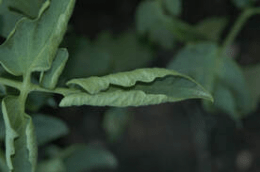No need to wait for the New Year to start healthier eating habits. Check out these easy cooking tips that will help everyone be a little trimmer this season!
Meat, Fish, Poultry
- Choose from the many options for lean protein foods this season.
- When using lean cuts of meat, choose moist cooking methods, such as baking, boiling, or slow-cooking.
- Limit breading. Consider using marinades or rubs for optimal flavor.
- For all types of meat and poultry, decrease the fat content considerably by cutting off visible fat and the skin and by removing the fat from pan juices before use. Use fat-free broth thickened with cornstarch or pureed potatoes for a sauce or gravy. Add a small amount of fruit juice for extra flavor.
Side Dishes
- Include lots of vegetables in your meals, both raw and cooked. To cook, just steam and serve. Dress them up with herbs or pair with other vegetables, such as green peas with onions.
- Use a low-fat, reduced sodium cream soup with fresh mushroom slices added for a quick vegetable sauce.
- Use fat-free yogurt or fat-free cream cheese as a base for dips. For dippers, try sliced veggie sticks or baked, whole wheat pita squares.
- Use fat-free evaporated milk when making cream soups or white sauces.
- Flavor dressings with fruits, herbs, spices, and whole grains, rather than with meat or chicken fat.
- Choose foods made with whole grains more often, such a brown rice, oats, or whole wheat, instead of foods made with refined grains.
Dessert
- Make desserts that taste sweet, yet have little sugar or fat.
- Try poaching pears or baking apples or bananas that you have lightly seasoned with cinnamon and cloves.
- Mix fruits with plain or flavored non-fat yogurt.
- Keep whole, dried, frozen, or canned (in water or juice) fruit on hand for a quick and easy snack.
- Consider serving traditional pie fillings as a custard in order to eliminate the calories and fat in the pie crust.

By: Jamie Rathbun
 Makes 9 servings.
Makes 9 servings.
 Every year we have calls from gardeners who have tomato plants with leaves that curl up. When tomato plants grow vigorously in mild, spring weather the top growth often exceeds the root development. When the first few days of warm, dry summer weather hit, the plant ‘realizes’ that it has a problem and needs to increase its root development. The plant tries to reduce its leaf area by rolling leaves. The leaves curl along the length of the leaf (leaflet) in an upward fashion. It is often accompanied by a thickening of the leaf giving it a leathery texture. Interestingly, leaf roll is worse on some varieties than others.
Every year we have calls from gardeners who have tomato plants with leaves that curl up. When tomato plants grow vigorously in mild, spring weather the top growth often exceeds the root development. When the first few days of warm, dry summer weather hit, the plant ‘realizes’ that it has a problem and needs to increase its root development. The plant tries to reduce its leaf area by rolling leaves. The leaves curl along the length of the leaf (leaflet) in an upward fashion. It is often accompanied by a thickening of the leaf giving it a leathery texture. Interestingly, leaf roll is worse on some varieties than others.
 They prefer at least 55 F for germination (or transplanting), but others such as peppers, cucumbers, melons and sweet potatoes need it even warmer, about 60 F. If planted when soils are too cool, they likely will rot before germinating.
They prefer at least 55 F for germination (or transplanting), but others such as peppers, cucumbers, melons and sweet potatoes need it even warmer, about 60 F. If planted when soils are too cool, they likely will rot before germinating.